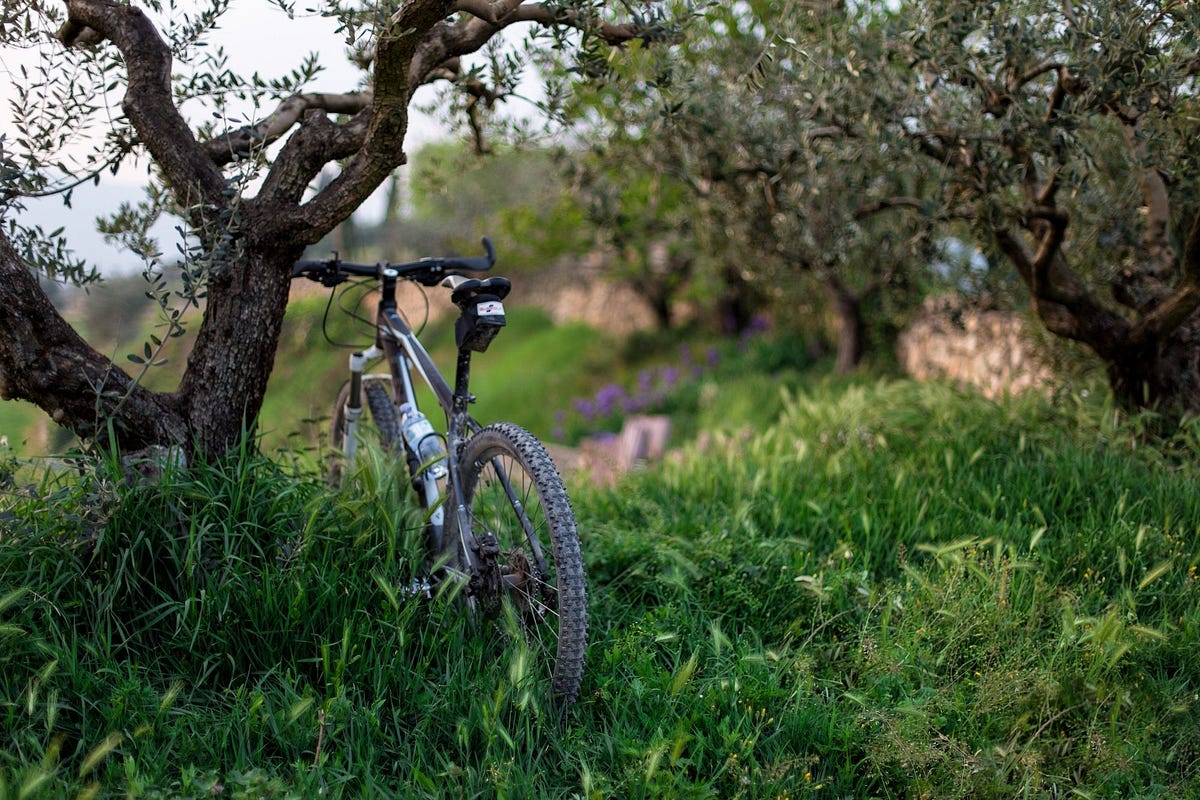Your brain needs a break.
If you’re like the average adult, you probably spend about six hours a day with digital media. That’s close to half your waking hours.
Aside from its many mental health consequences, excessive screen time can also affect our creative lives, hampering our attention span and our ability to form new ideas.
Overstimulated by a constant influx of voices and opinions, our distracted minds don’t have any free space to wander, which means even though we’re more connected than ever, we’re also less present and less inspired.
For those who don’t need the internet in their back pockets, minimalist “dumb phones” — cellular devices that can only make calls and send texts — may prevent time wasted on mindless scrolling.
But exchanging one screen for another doesn’t automatically solve the problem. While the advent of the “dumb phone” might keep you from checking Facebook every 20 minutes, it won’t make up for what you’re missing: real connection with the physical world.
One solution for curbing distraction and re-establishing presence? Exchanging your Mac screen for some quality time in nature.
The importance of grounding
If you’re always answering emails or running from meeting to meeting, you might feel productive — but chances are, you’re more anxious and less effective in your work and relationships.
The problem is, stress and worry (and, often, our smartphones) keep us focused on either the future or past. Yet inspiration and connection happen in the present moment, away from our screens and conference rooms.
Re-orienting ourselves with the physical world — a form of mindfulness called grounding — is the first step back toward the present. Basically, grounding re-establishes our embodied presence through touch, smell, taste, sound, and sight.
The good news is, to reap the benefits of mindful grounding, you don’t necessarily have to retreat to a cabin in the woods. Whether you’re nestled in a lakeside cottage or hunkered down in your cubicle, engaging with the physical world through your five senses can have a powerful effect on your body and mind, from strengthening your ability to regulate emotions to enhancing your interpersonal skills.
Wherever you are, start by simply examining your physical surroundings. I often practice an exercise called 5–4–3–2–1, where I notice five things I can see, four things I can touch, three things I can hear, two things I can smell, and one thing I can taste.
Even two minutes away from my Macbook, when I intentionally engage with the sensations of my body, interrupts anxious thought patterns and breaks the cycle of distraction, so I can re-focus on what matters — connecting with the people and things I love.
The benefits of nature
Every year, I leave behind the hustle of my normal work routine and travel to my family’s olive farm in Turkey. And every year, I’m surprised by how deeply a week spent immersed in nature boosts my ability to be more present in my personal and professional lives.
Disconnecting from the internet and breathing in the cool air during a colorful sunrise is like hitting “reset” on my mind.
While I’m not necessarily productive during these retreats — I’m always intentional about turning off my laptop and phone — I always leave with a sense of renewed purpose and inspiration.
And I have the olive grove to thank for it.
While we can put our five senses to work in any setting to prevent anxiety and reduce the effects of stress, nature is an especially potent and powerful tool — and there’s science to back it up.
From a mental health perspective, nature has an unmatched ability to bring balance and healing. According to one study, bright light and negative air ions found in nature can alleviate depression symptoms, while even scenic mountain view or the sounds of a babbling brook can enhance our ability to recover from stress.
Nature’s healing properties are so powerful that “forest bathing” is used as a legitimate wellness tool in other cultures. And some geologists say extended treks through the Grand Canyon can reduce symptoms of mental illness and other neurological issues.
In addition to its health benefits, there’s also scientific evidence that time spent immersed in nature, away from the ongoing “alarms” of a technology-rich culture, can boost creativity, memory, and the ability to multitask.
In one study, researchers found hikers were 50 percent more creative after just four days on the trails. The authors write,
“Our modern society is filled with sudden events (sirens, horns, ringing phones, alarms, television, etc.) that hijack attention. By contrast, natural environments are associated with a gentle, soft fascination, allowing the executive attentional system to replenish.”
In my experience, nature is a profound clarifier. It renews our sense of wonder and calibrates our perspective, both of which are crucial to success in the real world. In the Redwood Forest or the Grand Canyon, we’re reminded how expansive the planet is, and how small our problems are in comparison.
I love how philosopher Henry David Thoreau put it in his famous work, Walden:
“I went to the woods because I wished to live deliberately, to front only the essential facts of life, and see if I could not learn what it had to teach, and not, when I came to die, discover that I had not lived.”
Take a walk in the park
Of course, a jaunt to the Turkish countryside or a weekend escape to the woods isn’t always feasible. Sometimes, presence in the physical world means taking a break from the constant influx of information on your devices and opting for a change of scenery.
That’s why I regularly hold walking meetings with my colleagues. After a morning with my head down at a desk, the fresh air and city sounds center me. I always return to my projects feeling more focused and excited about the work I’m doing.
And with a little intentionality, you can experience the same benefits.
No matter where you are, take time each day to turn off your computer or phone. Get outside. Take a deep breath, and look around. You may be surprised by what you find, and how it inspires you.














Send Comment: